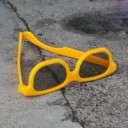Swimming and Flying in Nature---The Route Toward Applications: The Freeman Scholar Lecture
Journal of Fluids Engineering, 131 (3):
031801 (2009)DOI: 10.1115/1.3063687
Abstract
Evolution is a slow but sure process of perfecting design to give a life-form a natural advantage in a competitive environment. The resulting complexity and performance are so sophisticated that, by and large, they are yet to be matched by man-made devices. They offer a vast array of design inspirations. The lessons from swimming and flying animals that are useful to fluids engineering devices are considered. The science and engineering of this subject—termed “biorobotics�? here—are reviewed. The subject, being of dynamic objects, spans fluid dynamics, materials, and control, as well as their integration. The emphasis is on understanding the underlying science and design principles and applying them to transition to human usefulness rather than to conduct any biomimicry. First, the gaps between nature and man-made devices in terms of fluids engineering characteristics are quantitatively defined. To bridge these gaps, we then identify the underlying science principles in the production of unsteady high-lift that nature is boldly using, but that engineers have preferred to refrain from or have not conceived of. This review is primarily concerned with the leading-edge vortex phenomenon that is mainly responsible for unsteady high-lift. Next, design laws are determined. Several applications are discussed and the status of the closure of the gaps between nature and engineering is reviewed. Finally, recommendations for future research in unsteady fluids engineering are given.
Description
Swimming and Flying in Nature---The Route Toward Applications: The Freeman Scholar Lecture
